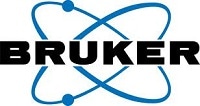The usage of chloramphenicol, a universal antibiotic first used in 1949, as a first line treatment in humans is restricted nowadays due to its potential harmful interactions and effects such as bone marrow suppression causing nonregenerative anemia or possibly lethal idiosyncratic aplastic anemia.
Moreover, chloramphenicol is a potential non-competitive microsomal enzyme inhibitor is capable of affecting the metabolism of other drugs. It is also used in veterinary applications but not in food animals due to the potential for harmful effects in humans.
According to European Union decision 2003/181/EC, any level of chloramphenicol presence in milk is strictly forbidden and all chloramphenicol detection techniques must fulfill or surpass the Minimum Required Performance Level (MRPL) of 0.3 ppb. A liquid chromatography tandem mass spectrometry (LC-MS/MS) technique running in multiple reaction monitoring (MRM) mode has been created for detection of trace levels of chloramphenicol presence in milk matrix with least sample preparation. The experiment involves the use of three MRM transitions, of which two for qualification and one for quantification. The quantification limit for chloramphenicol was set to 0.02 ppb with uniform ratios for the qualification ions. The calibration curve between 0.02 and 1.0 ppb pointed in milk matrix is linear with R2 = 0.9980 (weighting: 1/X).
Experimental
Sample Preparation
The experiment used chloramphenicol-d5 (100 µg/mL in acetonitrile) from Cambridge Isotope Lab and chloramphenicol (98%) from Sigma-Aldrich. The preparation of the blank milk matrix was done as per the Cronly et al technique. One mL acetonitrile and 0.5 g whole milk were mixed and vortexed in a 2-mL centrifuge tube for 30 s, followed by the addition and shaking of 0.25 g NaCl for 30 s. The slurry was centrifuged at a speed of 12000 rpm for 10 min. The resulting top organic layer was then shifted to centrifuge tube and dried by evaporating on an Eppendorf Vacuum Concentrator at 45 °C. The reconstitution of the resulting extract was done in 0.5 mL initial mobile phase (90:10 Water:MeOH) and then filtered using a 0.2 µm PVDF syringe filter. Different quantities of CAP were spiked into aliquots of the milk matrix together with 0.3 ppb (in matrix) d5-CAP as internal standard.
Chromatography (Advance HPLC)
- Column: ACE C18, 50x2.1mm, 3µ
- Mobile phase A: Water
- Mobile phase B: Methanol
- Injection volume: 10µL
- Flow rate: 0.5mL/min
- Gradient conditions
- 0.00 min 10% B
- 0.05 min 10% B
- 2.50 min 95% B
- 3.00 min 95% B
- 3.10 min 10% B
- 4.50 min 10% B
Mass Spectrometry (EVOQ Qube)
- VIP Heated-ESI Temperature: 400°C
- Cone gas temperature: 350°C
- Heated probe gas: 80 units
- Nebulizer gas: 80 units
- Cone gas: 10 units
- Spray voltage: -4500 V
- Standard resolution
- Active exhaust: On
- MRM scan time: 100ms/MRM
- CAP & d5-CAP MRM transitions
- m/z 320.9>152 (CE:12v) Quantitation
- m/z 320.9>257 (CE: 8v) Qualification
- m/z 320.9>194 (CE:10v) Qualification
- m/z 326>157 (CE:12v) Internal Standard
.jpg)
Figure 1. The Bruker EVOQ
Results and Discussion
Figure 2 demonstrates the overlaid chromatograms of the lowest spike level of 0.02 ppb (200 fg on-column) CAP and the milk matrix blank. A feeble background signal was detected in the matrix blank. On the other hand, the matrix interference peak has very low intensity when compared to the lowest spike level, enabling the detection of 0.02 ppb CAP.
.jpg)
Figure 2. Overlaid CAP chromatograms (TIC of 3 MRMs) of 0.02 ppb CAP spiked in milk marix and matrix blank.
Figure 3 demonstrates the overlaid chromatograms for all three MRMs for CAP, together with the peak-to peak (PP) signal-to-noise ratio (S/N). All S/N (PP) ratios are greater than 10 for 0.020ppb CAP (200 fg on column) in the matrix.
.jpg)
Figure 3. Overlaid MRM chromatograms of milk matrix blank (green) and 0.02 ppb CAP spiked in milk matrix (red).
Qualification
Decision 2002/657/EC points out various parameters to validate detection of the required compound. At least 4 Identification Points (IP) are needed as chloramphenicol is a prohibited Group A substance. This can be met by a minimum of 2 MRMs, with 1.5 IPs allocated for each MRM product ion and 1.0 IP allocated for the precursor ion. Each MRM’s ion ratio must match with that of the certified reference material under specified tolerances. The optimal permitted tolerance is ±25% for qualification MRMs having ion ratios from 20% to 50% of the most intense transition.
.jpg)
Figure 4. MRM chromatograms of 0.05 ppb CAP (0.5 pg on column) in milk matrix with ion ratios and their RSDs (n=3)
In this analysis, the ion ratios were stable (<10% RSD) between 0.05 and 1 ppb levels, as illustrated in an example of 0.05 ppb in Figure 4. However, the ion ratios at 0.02 ppb level were outside the range because of matrix contribution to the quantitation MRM (320.9>152) as illustrated in Figure 3. Nevertheless, the ion ratios are stable within 15% of the higher levels after correction with matrix blank.
Quantitation
Figure 5 shows the generation of 6-level matrix in line with calibration curve between 0.020 and 1.0 ppb with each level analyzed in triplicate. Linearity was better for R=0.9980 (weighting factor =1/X).
.jpg)
Figure 5. Calibration curve of CAP (320.9>152) in milk matrix from 0.02 ppb to 1.0 ppb (6 levels: 0.02, 0.05, 0.10, 0.3, 0.5, 1.0 ppb).
Conclusion
A simple and rapid LCMS/ MS technique has been created for analyzing trace levels of CAP in milk matrix using the EVOQ Qube Triple Quadrupole Mass Spectrometer. The EVOQ Qube can detect and measure concentrations down to 0.02 ppb CAP spiked in milk matrix.

This information has been sourced, reviewed and adapted from materials provided by Bruker Life Sciences Mass Spectrometry.
For more information on this source, please visit Bruker Life Sciences Mass Spectrometry.